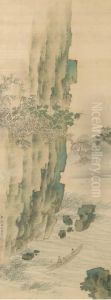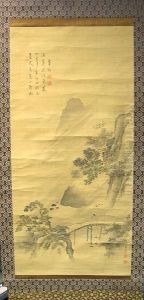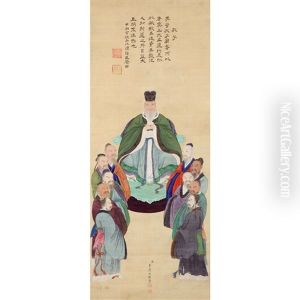Tachihara Kyosho Paintings
Tachihara Kyosho, born in 1786, was a Japanese painter and poet who lived during the Edo period, a time marked by relative peace and isolation from the outside world under the rule of the Tokugawa shogunate. Kyosho was known for his expertise in the nanga (Southern painting) style, which was inspired by Chinese literati painting traditions. This style emphasized the importance of personal expression and scholarly learning, and it was characterized by its use of brush and ink, focus on landscapes, and incorporation of calligraphy and poetry.
During his lifetime, Kyosho gained recognition for his landscape paintings and was associated with the bunjin culture, a community of literati who were deeply engaged in the arts, poetry, and intellectual pursuits. His works often reflect the bunjin ideal of living a life dedicated to the arts and the pursuit of personal cultivation, which was a key aspect of the broader nanga movement.
While Tachihara Kyosho’s work was rooted in traditional Chinese aesthetics, he and his contemporaries in the nanga school adapted these influences to create a uniquely Japanese interpretation. Kyosho’s paintings are characterized by their delicate lines, subtle use of ink wash, and often include poetic inscriptions, a testament to his dual talents in both visual and literary arts.
Tachihara Kyosho passed away in 1840, leaving behind a legacy that contributed to the development of Japanese painting. Although he was not as widely known as some of his peers, his work is appreciated for its embodiment of the nanga philosophy and for its role in the cultural tapestry of the Edo period. Kyosho's paintings and poetry continue to be studied as part of the rich history of Japanese art and literature.


